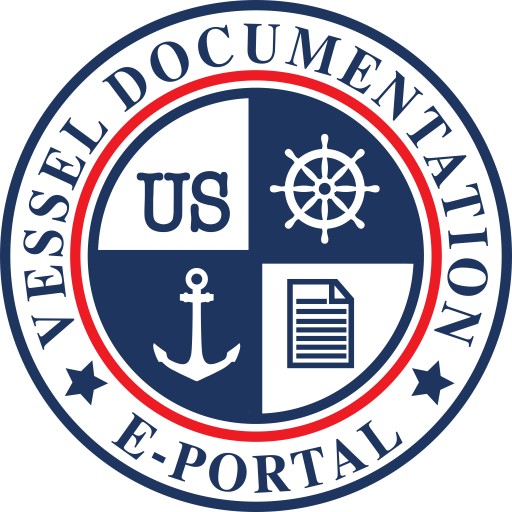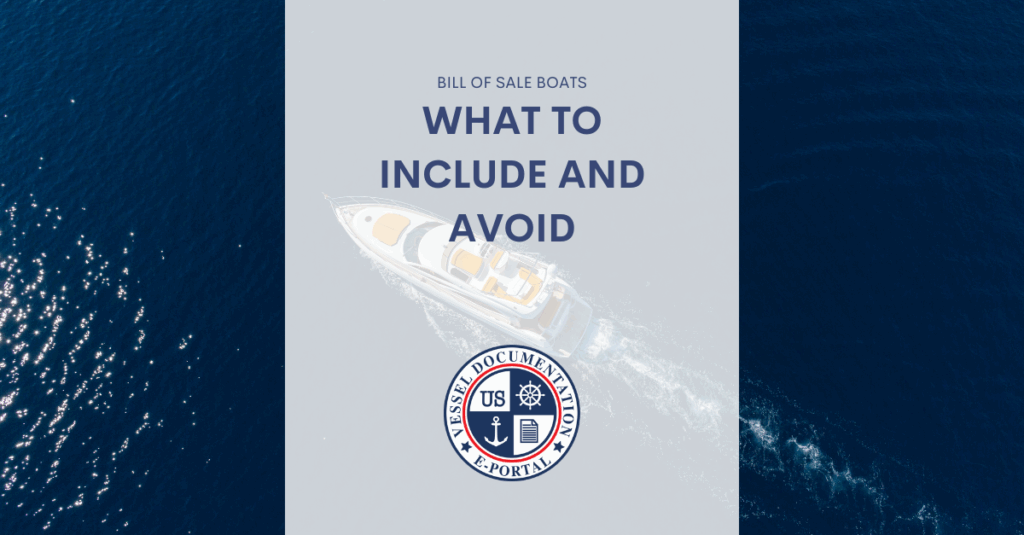When buying or selling a boat that isn’t documented with the USCG, one of the most critical documents involved in the process is the bill of sale. Whether you’re transferring a small recreational vessel or a documented commercial ship, a bill of sale for boats serves as a record of the transaction and establishes who legally owns the vessel.
While it might sound straightforward, not all bills of sale are created equal—and what is or isn’t included can have lasting implications.
Unlike vehicle sales, there’s no standardized government-issued bill of sale form for boats. That means it’s up to the buyer and seller to ensure that the document is both legally valid and contains all the relevant details. CG Portal can help make this easier.
Our online platform not only offers a secure place to upload your bill of sale for boats in terms of documentation purposes, but we also simplify the process of completing the necessary transfer of ownership forms when a documented vessel changes hands.
Why the bill Can Matter Quite a Bit
A bill of sale isn’t just a receipt—it’s a legal declaration of ownership transfer. In the marine world, this document can be especially important when applying for or updating documentation through the U.S. Coast Guard. For vessels already documented with the USCG, the bill of sale acts as supporting evidence during the official transfer process.
Without a properly written bill of sale, there’s no clear proof of who owns the vessel. That can create confusion during registration, make financing more difficult, or even complicate legal claims in the case of disputes. CG Portal helps users avoid those headaches by offering a streamlined way to submit bills of sale and complete USCG documentation requirements.
What Should Be Included in a Bill of Sale
Since there’s no universal template provided by the federal government, creating a bill of sale falls on the seller and buyer. However, there are essential elements that every effective bill of sale for a boat should include:
- Full legal names and addresses of both the buyer and seller. These must match any names appearing on official documentation or title records.
- Detailed vessel description. This includes the vessel’s name (if applicable), make, model, year, and length. For documented vessels, you should also include the official documentation number and hull identification number (HIN).
- Sale price of the vessel, clearly written in numeric and written form (e.g., “$25,000 (twenty-five thousand dollars)”).
- Date of sale, including the day, month, and year.
- Terms of the sale, such as whether the vessel is being sold “as is,” whether it includes any warranties, or if additional equipment (trailers, electronics, etc.) is included.
- Signatures of both the buyer and the seller, preferably with printed names beneath each signature.
- Witness or notary information if required by your state or for added legal protection.
CG Portal makes it easy for vessel owners to upload this document when applying for or updating their USCG documentation. Our online interface accepts your supporting paperwork securely and efficiently, so you can avoid mailing delays or confusion.
What You Should Leave Out of a Boat Bill of Sale
While it’s essential to be thorough, certain things are better left out of a bill of sale. Including too much unrelated or vague information can muddy the document and cause complications later.
Avoid:
- Overly broad language. Terms that are unclear or general, like “includes some accessories,” can lead to disputes. List every additional item included in the sale.
- Unofficial promises. If the seller agrees to repairs, payments, or other conditions outside the sale itself, those should be documented separately in another agreement.
- Omissions. Leaving out vital identifying information like the HIN or documentation number on a documented vessel may delay transfer or registration.
- Unverified or incorrect data. Misstating the year, model, or owner name can cause problems when transferring ownership or registering with the Coast Guard.
By using CG Portal, you can ensure that your bill of sale is attached to the correct documentation file and submitted alongside the proper forms. This reduces errors and keeps your vessel’s paperwork compliant.
Creating the Bill of Sale for Boats Yourself
Since there is no official government-issued bill of sale form for boats, many buyers and sellers choose to draft the document themselves. This gives flexibility, but it also comes with responsibility—ensuring that every detail is accurate and legally valid.
You don’t need to hire an attorney to write a bill of sale for your boat, but it’s a good idea to reference sample templates or look to your state’s guidelines to make sure your document holds up under scrutiny.
Once the bill of sale is completed, CG Portal allows you to securely upload it directly through our platform when filing documentation. Whether you’re dealing with a newly purchased vessel or updating ownership records, our system ensures your paperwork gets where it needs to go.
For Documented Vessels: You’ll Need a Transfer Form
If you’re selling a vessel that’s already documented with the U.S. Coast Guard, a bill of sale is only part of what’s required. In this case, you’ll also need to complete an official Transfer of Ownership form.
CG Portal makes this process much more straightforward. Instead of searching for the correct government form or struggling with outdated submission instructions, you can find everything in one place. Our portal lets you complete and submit the transfer form directly through our site, attaching your bill of sale and any supporting documents along the way.
This is especially helpful for sellers who want to avoid long wait times or paperwork being returned for corrections. Our submission process is clear, fast, and built around the Coast Guard’s exact requirements.
When a Bill of Sale May Be Required for Documentation
There are a number of situations where a bill of sale may be necessary to complete USCG documentation tasks. These include:
- Initial documentation of a previously undocumented vessel that was purchased used
- Transfer of ownership for a documented vessel
- Change of managing owner or address
- Reinstatement of documentation where ownership needs to be verified
In each of these cases, CG Portal accepts digital uploads of the bill of sale as part of our application process. You don’t have to send physical documents or worry about missing a submission deadline.
Bill of Sale and Their Owners
Whether you’re buying your first boat or a bigger one, the bill of sale is essential—not just a formality. It’s key for avoiding legal trouble, speeding up Coast Guard paperwork, and clearly proving vessel ownership during the transaction.
CG Portal is here to support you at every step. Our platform is designed for users who want to complete vessel documentation tasks efficiently, including submitting a bill of sale and initiating ownership transfers. We’ve made it easy to navigate the paperwork so you can spend less time handling forms and more time on the water. To see all of the ways we can help, click through our site.

